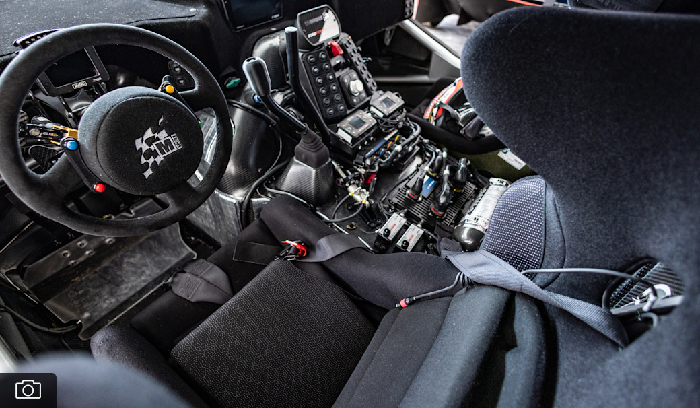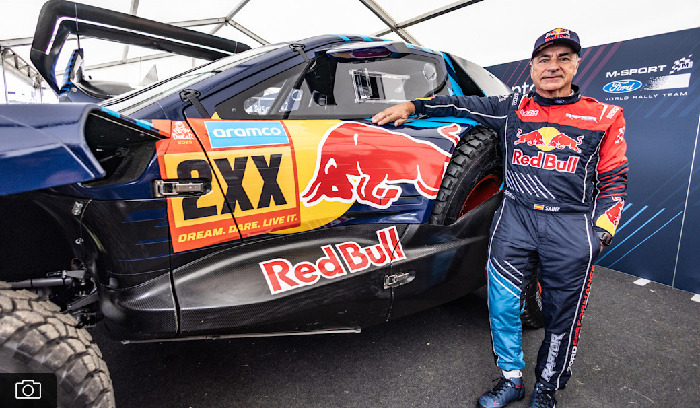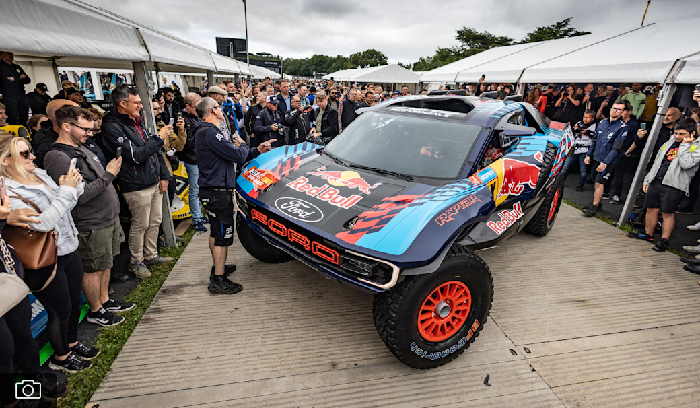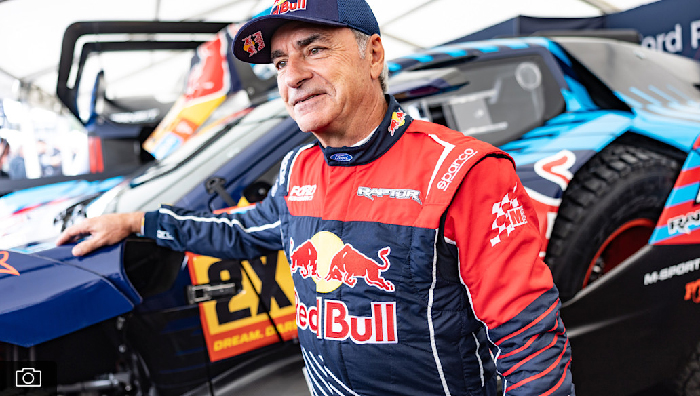Four-time Dakar Rally champion Carlos Sainz is targeting a fifth title at the age of 62 when the 2025 edition plays out from January 3-17, 2025 across Saudi Arabia’s rocky terrain and iconic sand dunes, so who better to reveal the secrets behind off-road success in the world’s toughest race.

After winning two World Rally Championship titles in 1990 and 1992, Sainz – also known as El Matador – has been a mainstay of the Dakar Rally with four titles to his name in 2010, 2018, 2020 and 2024.

He returns in 2025 looking to add a record fifth win with a fifth different manufacturer, the motorsport legend drawing on a wealth of experience to navigate his way over the route that covers 7,759 kilometres spread across 12 timed special stages from Bisha to the Empty Quarter desert.
Here is what the Madrid native had to say before he debuts the Ford Raptor T1+ car:
How do you prepare yourself physically for the unique challenges of the Dakar?

“Obviously with age, I’ve had to adapt my training program. I work with a team of professionals and they know me very well. The reality is that I’m working much more on fitness than I did when I was younger. These days I’m dedicating more time to the aerobic part of my preparation. I always say that I prefer to suffer at home, so I don’t suffer so much at the Dakar.”

What helps you and co-driver Lucas Cruz make sense of the roadbook?
“We get the roadbook just a few minutes before we start the stage, not the day before like it used to be. It’s up to the co-drivers to have a good understanding of it and us drivers must help as much as possible. When we arrive to difficult places, we work together to find the right way.”
How did you win the 2024 Dakar without achieving a single stage win?
“To win the Dakar Rally you need to have a good strategy, plus you must be faster than the others. In 2024 the rally went well for us. The 48-hour Chrono stage was strategically important. We decided not to start that stage near the front and, for that, we lost some time on the previous day.
So we had a good starting position and we won the first part of the 48-hour stage. On the second part, we got stuck in the dunes and lost some minutes. Sébastien Loeb ended up winning the stage, but we weren’t far behind in second. The rest was quite tricky, lots of high speed and difficult stages. We had a good fight with Seb until the penultimate stage.”
Can you elaborate more on the 48-hour Chrono stage, the Dakar Rally’s latest innovation?
“The 48-hour Chrono stage is now a crucial part of the Dakar. It’s two days without any service from your team. You sleep in a tent in the desert and it depends on your speed where you end up sleeping and who else is there. In 2025, it is very early in the rally, basically the second day. It will be so important to get it right, especially for us with a new car.”
Do you remember a particularly tough stage and how it made you suffer?
“I can say that one stage in South America stands out. It was extremely hot and I suffered from dehydration. Sometimes in South America, we had temperatures reaching 45 degrees Celsius and that was the case during this particularly demanding stage. I remember it affected me very badly.”
What Dakar Rally rule changes would you make?
“It might be the starting order. When you’re a factory driver and you have a problem on one stage, I think it can be dangerous to start so far back the next day because you end up overtaking so many cars. In addition to this, I would change the distance of the sentinel [an alert system that can be activated when you are 250 metres behind a slower vehicle that you want to pass]. It would be good to increase the sentinel range by another 100 metres because this would help to avoid accidents.”
What are the most outrageous Dakar stories that you have heard?
“I remember at my second Dakar, I finished a stage and a group of journalists came rushing towards me. They were all asking me about a problem with my co-driver. Apparently, there was a story among the press that I’d had a disagreement with my co-driver and left him in the desert. Obviously, the story was not true! The journalists had mistaken me with another competitor, Carlos Souza.
The truth is that we had all got caught up in a very strong sandstorm and they had to cancel the stage. Souza and his co-driver Andy Schulz (who was my co-driver at my first Dakar) got out to free their car from the sand, then Souza got back in his car and drove for 200 metres before he realised Andy was still outside. Because of the massive sandstorm, they couldn’t find each other again for a long, long time. It was only when I got back to the bivouac that I got to hear the full story.”

COMMENTS